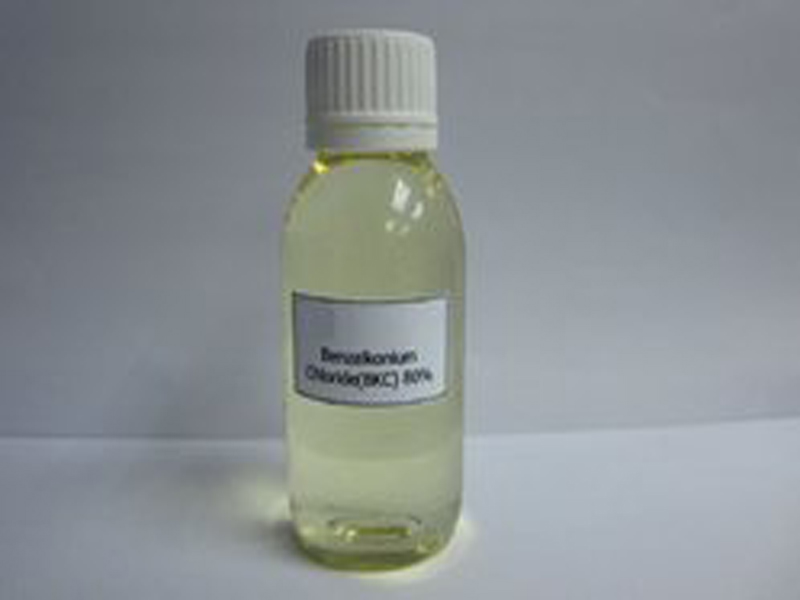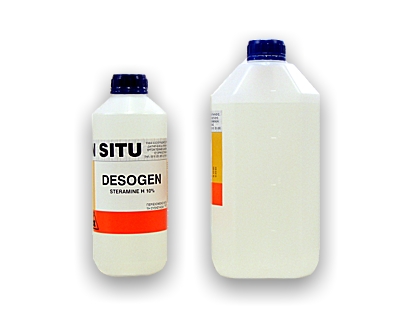Pub And Nea To Call Over S$5b In Tenders For Tuas Nexus
Is your building ready for the Spring? Every season change brings with it a laundry list of things for building managers and facility operators to do. Every building is different and has its own unique set of requirements for preparing for the coming season. This fluctuates greatly depending on which part of the country (or world) your facility is located in, as well as what type of facility you are operating. For example, the requirements of a university building is typically different that of a manufacturing facility.
The key to a successful strategy to address seasonal building maintenance is planning for the details. Areas in your facility that go overlooked, never get the maintenance attention they require; and it is those small, seemingly insignificant areas, that are the ones that always cost the most to address "later on" or "down the road." In this case, the proverbial squeaky wheel, goes along ungreased... and at some point gives out.

A great example of this is cooling tower water treatment or cooling tower maintenance in general. Every month you throw a cursory glance at your cooling tower... it's running, seems fine, the water is clean... or is it? Sometimes it is what you don't see that gives you the biggest headaches. Even though the water looks clear, your cooling tower could be undertreated and growing biofilm, and that super thin, almost undetectable, layer of biofilm is greatly impeding heat transfer. If this is the case, you could unwittingly be spending thousands of unnecessary dollars in increased energy costs. Or worse, that biofilm could be aiding in under-deposit corrosion in your chiller which could greatly shorten its usable lifespan.
So what can you do to prepare your facility for the coming season change? How do you make sure your facility is looking its best and ready to operate at peak efficiency? How do you identify and manage facility condition risks? It may sound archaic, but the almighty checklist is still the vehicle of choice for making sure that all major areas of your facility are attended to without fail.
In our effort to help out we have compiled a our own checklist to an imaginary facility. Since every building is completely unique, homepage we concentrated on areas that are going to be 70% of commercial facilities. This is not a one-size-fits-all solution for every facility (that would be impossible), but it is a good start and hopefully a great idea generator for your spring season facility checklist. We call it The Ultimate Springtime Facilities Management Checklist, and before you send us angry emails about all the things we forgot, we would like you to consider using this checklist as conversation starter with your operations team to make sure that your facility is getting the attention it needs this spring. All you have to do is click the link below to get your free instant download!
If you feel like there are some more (super obvious) areas that we should add to our list, please let us know in the comments section below. Have a Happy Spring, Thanks for reading and good luck!
Greg Frazier is an expert in Industrial Water Treatment and is currently the Managing Partner of Clarity Water Technologies, one of the best Water Treatment and HVAC Cleaning Companies in the Atlantic Northeast. Mr. Frazier has over 18 years of Industrial Water Treatment experience and holds a degree in Chemical Engineering from the University of Tennessee. Clarity Water Technologies specializes in extended water treatment services. For instance, Clarity's service goes beyond just Cooling Tower Water Treatment - it also includes Cooling Tower Maintenance.
Proper Commissioning And Initial Startup Procedures Extend Boiler Life
San Leandro, CA /PRNewswire/ - Energy Recovery, Inc. (NASDAQ: ERII), the leader in pressure energy technology for industrial fluid flows, today announced total awards of $6.2 million to supply its PXTM Pressure ExchangerTM technology for desalination projects in Saudi Arabia. The orders are expected to ship in the 1st half of 2018.
Energy Recovery will supply its PX-Q300 Pressure Exchangers for multiple facilities, which will produce up to 305,000 cubic meters of water per day. Energy Recovery estimates the PX devices will reduce the facilities' power consumption for all projects by 33.7 MW, saving over 291 GWh of energy per year, and helping the facilities avoid over 174,000 tons of CO2 emissions per year.
Energy Recovery's President and CEO Joel Gay stated, "The Middle East remains a key market for Energy Recovery and an indication of continuing strength in the global desalination market throughout 2018. Saudi Arabia has prioritized the reallocation of economic resources, with potable water and desalination of particular focus. As evidenced by this latest award, Energy Recovery is a direct beneficiary of said shift in focus and will continue to deliver our best-in-class technology and solutions throughout the global desalination market to enable customers to maximize operational efficiency while minimizing total life-cycle cost."
About Energy Recovery
Energy Recovery, Inc. (ERII) is an energy solutions provider to industrial fluid flow markets worldwide. Energy Recovery solutions recycle and convert wasted pressure energy into a usable asset and preserve pumps that are subject to hostile processing environments. With award-winning technology, Energy Recovery simplifies complex industrial systems while improving productivity, profitability, and efficiency within the oil & gas, chemical processing, and water industries. Energy Recovery products save clients more than $1.8 billion (USD) annually. Headquartered in the Bay Area, Energy Recovery has offices in Houston, Ireland, Shanghai, and Dubai. For more information about the Company, please visit www.energyrecovery.com.
Forward-Looking Statements
Certain matters discussed in this press release are "forward-looking statements" within the meaning of Section 27A of the Securities Act of 1933, as amended, and Section 21E of the Securities Exchange Act of 1934, as amended, including expectations regarding the timing of shipments of the orders, reductions biocide in oil and gas,DBNPA - My Web Site, power consumption from the technology and market share expectations. These forward-looking statements are based on information currently available to us and on management's beliefs, assumptions, estimates, or projections and are not guarantees of future events or results. Because such forward-looking statements involve risks and uncertainties, our actual results may differ materially from the predictions in these forward-looking statements. All forward-looking statements are made as of today, and we assume no obligation to update such statements, whether as a result of new information, future events, or otherwise.
Veolia Awarded A Contract At Welsh Water's Five Fords Wastewater Treatment Works
Should you be pre-treating your boiler feedwater by running your makeup water through a dealkalizer? If you are a facilities manager or an engineer with a good amount of boiler system experience, you may know the answer to this question already; otherwise, you may be thinking:

What the heck is a dealkalizer?
Well, before we can easily answer that question for you, we need to first discuss alkalinity. One of the criteria that any successful boiler water treatment program must account for is the alkalinity of the makeup water source. If you are responsible for a steam system in your plant, you should have a basic understanding of what kind of effects alkalinity can have on your system.
First, you should know that alkalinity comes in different forms. Hydroxyl alkalinity (OH-) that comes from soda ash or caustic addition is vital to ensuring the proper chemical mechanics are in place for scale inhibition and corrosion prevention; however, naturally occurring alkalinity in the form of carbonate (CO3-) and bicarbonate ions (HCO3-) found in most water makeup sources can cause the following two issues:
When alkalinity enters a boiler, it breaks down into carbon dioxide which is released by the steam. Carbon dioxide forms acidic carbonic acid in condensate returns resulting in pH levels usually below 6.0. Condensate treatment, in the form of neutralizing amines or filming amines, must be fed into the steam header to prevent corrosion of the condensate piping. The higher the carbonate alkalinity, the more amine that needs to be fed to counter these issues. For example, a boiler plant that produces 100,000,000lbs of steam per year at 20 cycles of concentration and 20% makeup with a water source alkalinity of 150ppm will require over 1,000 gallons of neutralizing amine per year just to maintain a condensate pH of 8.2.
Carbonate ions will react with other positively charged ions such as calcium, magnesium, silica, iron and phosphate in the presence of heat and pressure to form various types and degrees of scale. These deposits will precipitate out of solution and attach out to the boiler tubes which will begin to impede heat transfer rates. If left untreated, this can eventually lead to tube rupture from overheating.
For facilities that commonly have low makeup water alkalinity (usually below 50ppm), the above issues can be treated cost effectively by using the proper scale inhibitor and condensate treatment chemistry. However for facilities that have moderate to high levels of alkalinity in their makeup water source (>100ppm), the implementation of a dealkalizer to mechanically remove this carbonate alkalinity may be the most economical and effective means of treating your boiler systems.
A dealkalizer (sometimes spelled ?dealkalyzer??) acts and performs very much like a water softener with a few exceptions. While a softener removes calcium and magnesium ions by exchanging them with inert sodium ions when passed over a cationic resin bed, a dealkalizer removes carbonate ions by exchanging them with chloride ions by passing it over an anionic resin bed. Both require solar salt for regeneration of extinguished resin; however, a dealkalizer further requires a supplemental caustic solution to be fed during regeneration to boost effluent pH and enhance the anionic resin efficiency. The vessel, controls and layout are almost identical to that of a softener.
Going back to our steam system example that we listed above, where a boiler plant that produces 100,000,000lbs of steam per year at 20 cycles of concentration and 20% makeup with a water source alkalinity of 150ppm would require over 1,000 gallons of neutralizing amine per year; now with the addition of a dealkalizer removing all but 20ppm of the makeup source alkalinity, we would now see a yearly reduction of amine usage of over 850 gallons per year!
If your facility has high alkalinity in your water source, and you are considering installing a dealkalizer for your steam pre-treatment there are some conditions you need to consider:
Water entering the dealkalizer must be softened. In order to work properly, a water softener must be in place prior to the dealkalizer.
The chloride level of your makeup water exiting the dealkalizer will be elevated. You must be aware of and understand any chloride limitations of your feedwater tanks and boilers prior to installing a dealkalizer to ensure this elevation does not damage the metallurgy of your other systems.
In most cases, the pH of the effluent exiting the dealkalizer will be below 7.0 so you will have to store caustic onsite for regeneration purposes.
As with most mechanical and chemical concerns in your plant, you must weigh the pros and cons of any capital investment such as a dealkalizer. If appropriate to your system, a correctly sized and installed dealkalizer can save you money, time and headaches. A qualified and experienced water treatment company can guide you through this process and help you determine if a dealkalizer is the best option for your site.
Want to take a deeper dive? There is a good article about the different types of dealkalizers on Water Quality Products Magazine?s website.
Do you like this article and want to learn more about what NOT to do in your boiler room?
Check out our FREE book: